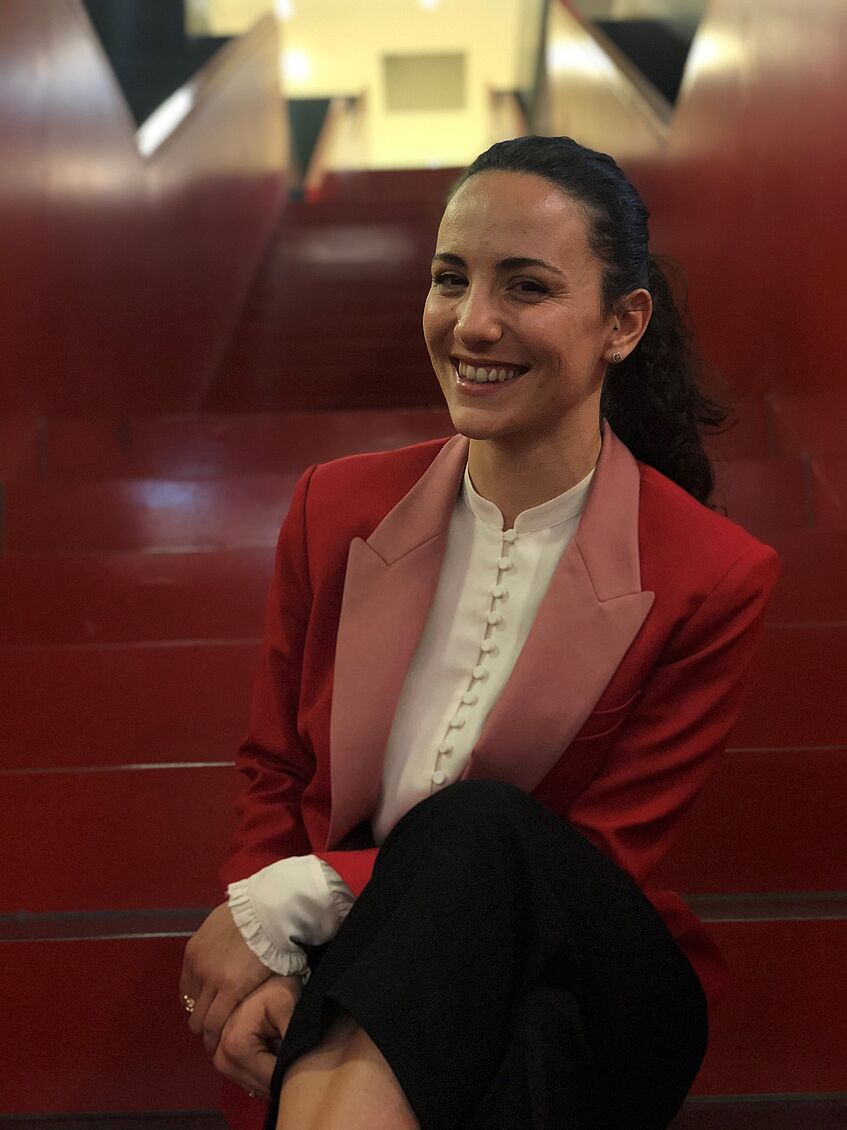Vittoria Sposini
The physics of slow dynamics in soft-hard mixtures

The physics of slow dynamics in soft-hard mixtures
This project aims to contribute to the systematic study on soft-hard colloidal mixtures composed of large star polymers and small hard sphere-like depletants. Focusing on the key role of heterogeneity, looking into correlations, anomalous relaxations and memory effects, an in depth investigation will be carried out to explore this class of glassy systems from a new perspective. Moreover, of main interest here is not only the glassy dynamics of the system but also the transport and diffusive properties of the small hard spheres along the polymeric matrix formed by the stars.
So far my research has been focused on the diffusive properties of a specific class of systems in which the mean-squared displacement exhibits the linear growth in time, typical of Brownian transport, yet the distribution of displacements shows an exponential shape. This behaviour has been interpreted as due to diffusion in systems displaying various type of temporal and/or spatial heterogeneity.
If one focuses on the physics of systems approaching the glass transition, it is immediate to see that spatiotemporal heterogeneity plays a key role in this kind of systems as well. The slow dynamics typical of glassy systems displays many of the features characteristic of anomalous transport, however only few works are present in literature where a clear link between fractional dynamics and transport properties close to glass transition is explored. A deep understanding of the system that one wants to study is essential to define a proper model of anomalous diffusion. This is why, even though numerous directions have been explored in the theory of anomalous diffusion to address the study of dynamics in complex systems, mainly qualitatively comparisons are eventually reported, and a direct connection to specific and more realistic systems often eludes.
I plan to take advantage of the tools from anomalous diffusion, starting from fractional calculus to stochastic modeling, and to compare and integrate the new insights coming from this study with results obtained from statistical mechanics-based approaches commonly used to analyse glassy dynamics. Finally, the main goal of the project is to investigate the theory of glass transition from a different and new perspective, focusing on the particular system of star-polymer/hard spheres mixtures.
An initial description of the system, where entropic interactions only are introduced, will be initially studied, to lay the foundations for the study of various unexplored scenarios. In particular, the characterisation of the glass transition of the system will provide a better understanding of its dynamical properties, which will then be employed for the definition of a suitable diffusive model for the hard spheres.
The study will then advance towards a higher level of complexity, where attractions between stars and colloids are introduced. Finally, one can explore different features of the hard spheres, i.e. size, anisotropy, activity, in order to investigate how they influence the glassy and dynamical properties of the system.
The proposed research is based on an interplay between coarse-graining models, theory of stochastic processes, mode-coupling theory and molecular dynamics and Monte Carlo simulations, with the main goal of employing interdisciplinary tools to develop and enrich the description of soft-hard colloidal mixtures.
